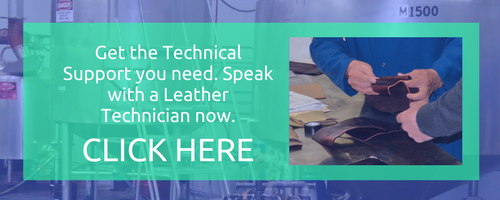10 Steps to Create Superior Waterproof Leather
Water resistance is the ability of leather resisting absorption and transmission of water. We manufacture the chemicals to create waterproof leather from cattle hides tanned with chrome for consumer products like sports shoes, mountain boots, or army boots. Naturally, leather does not transmit water through its cross section under any conditions. To develop a method to produce waterproof leather with characteristics like softness, suppleness, and heat resistance, we must consider the mechanism of waterproofing.
Waterproofing the fibre bundles of a hide includes filling in the interstices with a substance. This takes away the ability of the fibre surface to absorb and transport water. Water does not spread on such surfaces, but instead forms beads.
On the other hand, water repellency is the ability of a leather surface to resist wetting. An efficient water repellent agent should increase the time it takes for water to permeate the leather and reduce the water absorption. If you can get an effective waterproofing effect, the leather will have a fine, dense structure. We will introduce as few surface active substances as possible during leather production. We typically use waterproofing agents during the retanning process. The waterproof level of leather is typically measured in Maeser flexes. This is the count of flexes that leather can undergo before it loses its waterproofing ability. The waterproof standard set by the U.S. Military is 15000 Maeser flexes.
To create superior waterproof leather we must follow a tested and approved formula. With years in the leather business, we have perfected this method and recommend this procedure to help guide you through the waterproofing process in your tannery.
Waterproofing Leather Formula:
- Wash the leather.
- Step One and Two are generally performed together. Here, the hides undergo the degreasing and neutralizing phase. In the degreasing phase, we use a nonionic degreasing and emulsifying agent. This degreases the hides and prepares them for further treatment. We recommend using Meropol BS-105.
- This is the neutralization process of the skin. We recommend a neutralizing system like Sortan SKM because it has a strong neutralizing and buffering effect. With its strong buffering action, it ensures uniform neutralization through the entire cross section of the leather, therefore, there is little risk of over neutralization. We also encourage using about 2.0 % of an anionic dispersing polymer like Sortan PD to significantly improve the penetration, levelness, and distribution of retanning agents, fatliquors, and dyestuffs. This will provide a stabilizing action on the waterproofing system.
- Wash the leather after neutralization.
- For the application of dyes, we recommend using our line of Penetrol dyes. These acid dyes provide a stellar performance in lightfastness, perspiration, and washing, while exhibiting a vibrant shade.
For the waterproofing phase, use a waterproof fatliquor for high performance waterproofing. We recommend this because of its high fastness particularly on white and lightfast products or if you choose to test this leather by the Maeser method. We suggest using Meropol Oil WPS at an amount of 8.0 % and running time 60 minutes. - Here we’ll perform the first fixation phase of fatliquor and dye with formic acid.
- Wash.
- Now, add an emulsified silicone oil, like Meropol Oil WP Top, to help with the waterproofing. We recommend using an amount of 3.0 % after running for 30 minutes.
- Our final recommendation is a final fixation using a mineral salt to achieve high waterproof performance of leather at an amount of 3.0 % and time 120 minutes.
As a result the leather now is waterproof and at medium softness. The grain remains tight, even when we apply higher amounts of waterproof product. Plus, the grain has a pleasant and smooth handle.
We find this procedure to be most effective when utilizing the products we recommended. It creates a balance between water repellency, the ability of a leather surface to resist wetting and water resistance, the ability of leather resisting absorption, and transmission of water. Combined, this creates the water-resistant leather that will be durable enough for the products that require it.
Click the link below to talk with a Leather Technician or request further technical support.



